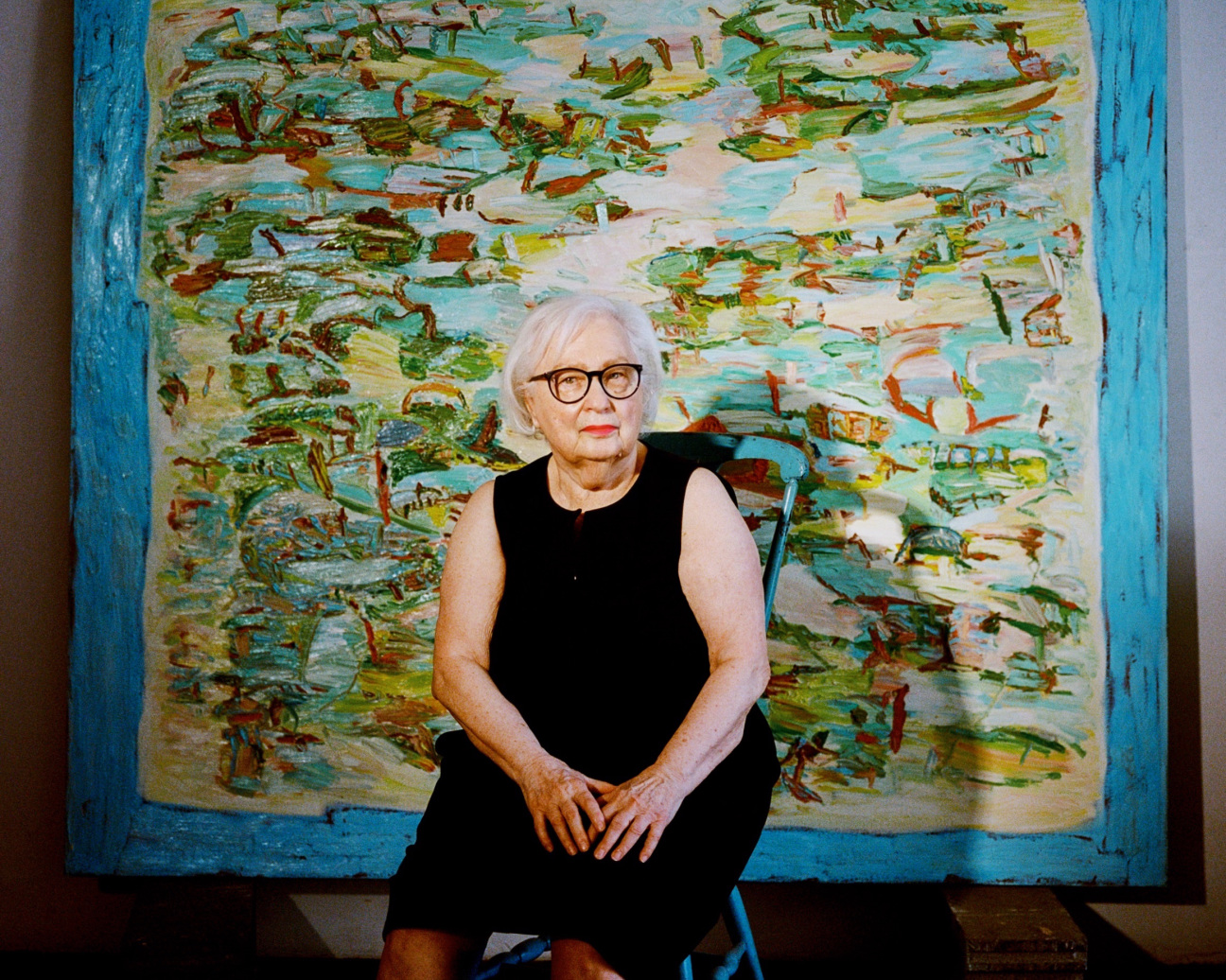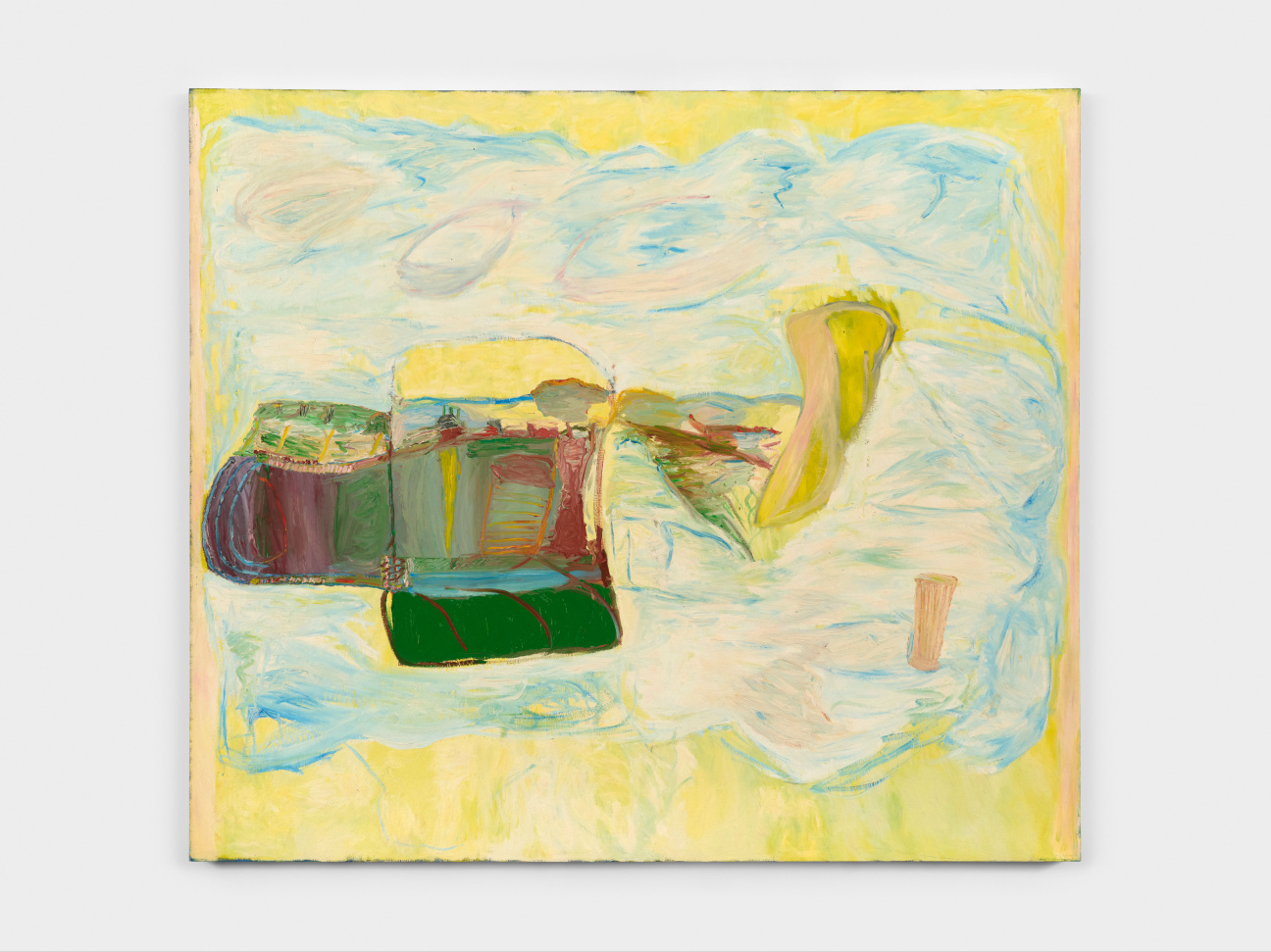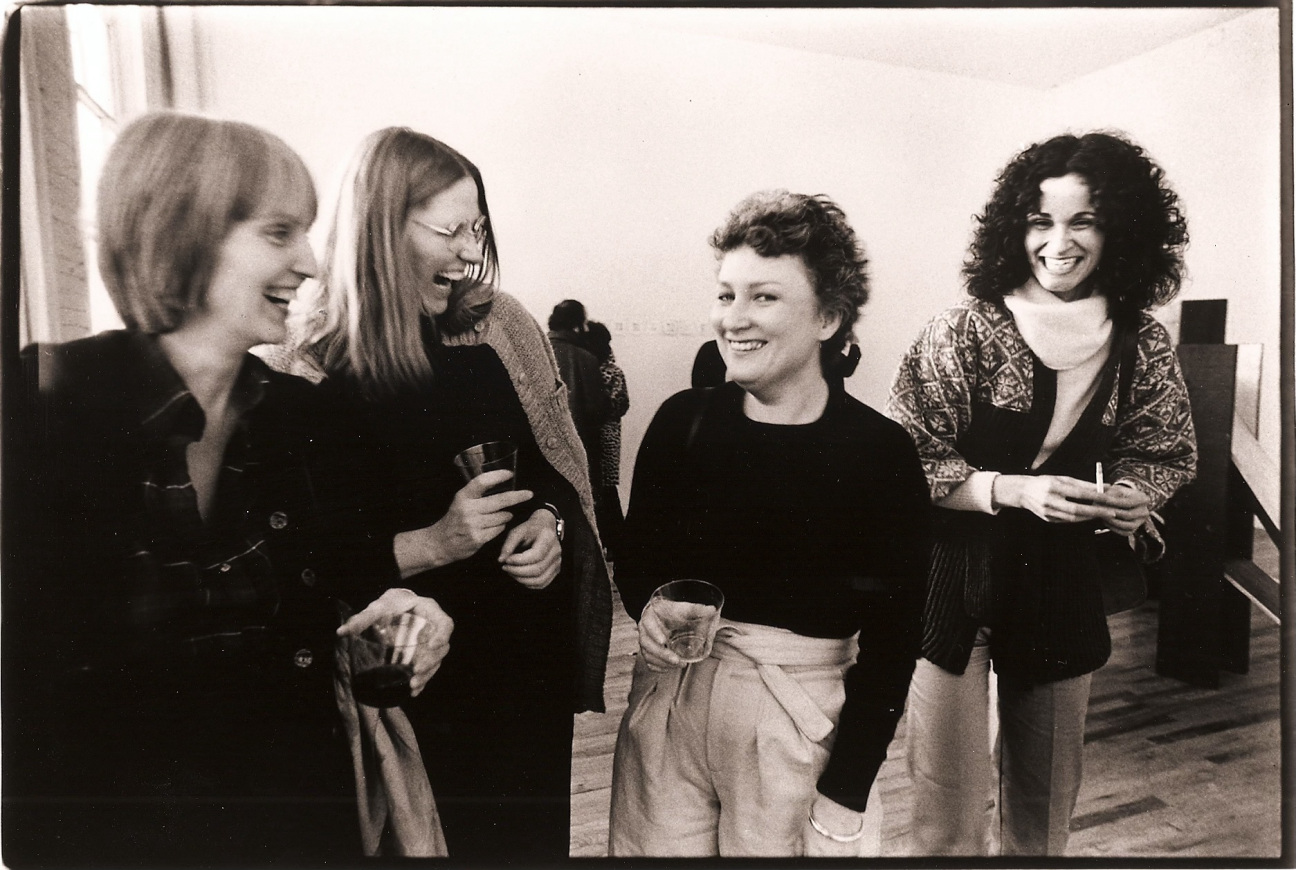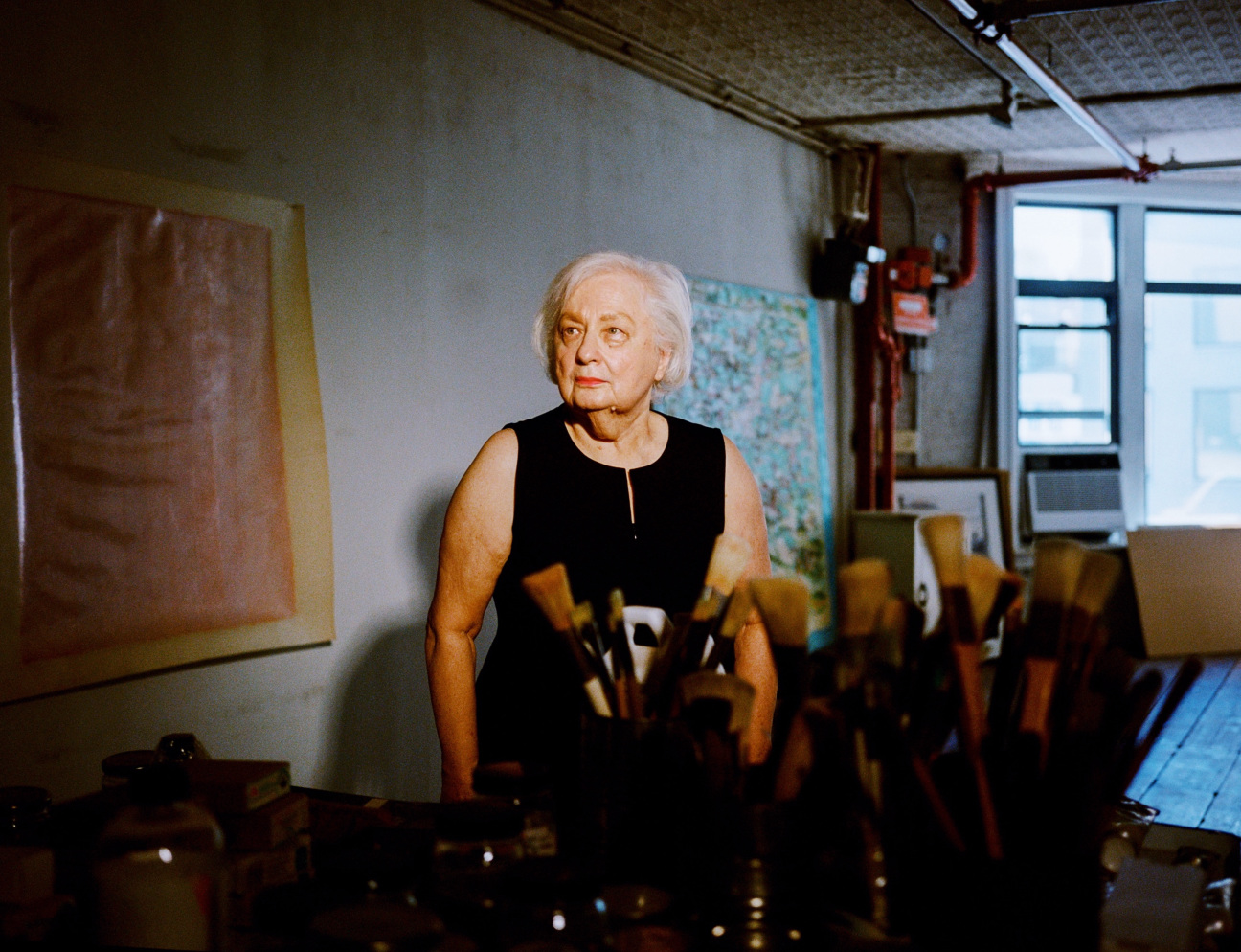
“Does that seem like an awkward painting to you?”
Loretta Dunkelman was at her Lower Manhattan loft in late September, looking at a foamcore model of New York’s Polina Berlin Gallery. On Oct. 22, she would open “Engrossed in the Shell (the Sky and the Circle),” her first solo show in the city since 1987, in that very space. The last one took over A.I.R. Gallery—the pioneering Soho venue she had co-founded 15 years earlier with seminal feminist artists like Nancy Spero, Mary Grigoriadis, and Judith Bernstein—and marked the end of her collaboration with the group. Now 87, the artist displays confidence in a practice that has long been out of the spotlight—along with moments of doubt.
Looking anything but “awkward,” even as a tiny print-out, the painting in question is rimmed by lemon yellow, with blue and white passages resembling clouds, and earthy passages in green and red, recalling Abstract Expressionist painter Joan Mitchell’s “remembered landscapes.”

Dunkelman had laid out crusty bread, Gruyère, and grapes in the live-work space she has occupied since 1967, its windows facing out onto the intersection of Bowery and Canal Street. A few floors above the commotion and traffic, she draws and paints precise, meditative works.
Over her six decade-long career, the artist has shown in galleries and museums nationwide and seen her work enter the collections of the Whitney and Smithsonian. But Polina Berlin doesn’t think Dunkelman has received the recognition she deserves, and she’s betting on others feeling the same way this fall.
“I happened upon her by accident around 2017,” Berlin recalls. A friend who lived in Dunkelman’s building introduced them. “I was charmed by her and curious about an artist who had been there for decades.”

Dunkelman, a New Jersey native, earned a degree in art in 1958 at Rutgers University’s Douglass College, where she met the likes of John Cage, Merce Cunningham, Allan Kaprow, and George Segal. Field trips took her to groundbreaking New York galleries, including Sidney Janis and Betty Parsons. In 1966, she earned an MFA at New York’s Hunter College, where she studied under the artist Tony Smith. Among her earliest works were lush abstractions organized around a grid, which, to her satisfaction, were once characterized as “Monet bricks.”
Just a few years later, after she’d appeared in a handful of group shows, the trailblazing curator Marcia Tucker invited her to exhibit a work at the 1973 edition of the Whitney Biennial, one of the art world’s most prestigious stages. (“I’ve called to do some business with you,” Dunkelman remembers Tucker saying.) The piece she showed, Ice-Sky, 1971-72, is a luminous, purely abstract, five-panel drawing that moves through shades of blue, pink, and white.

That work will now appear in the upcoming show at Polina Berlin Gallery. “On one of my visits she opened it up on the floor,” Berlin says. “It almost felt like a James Turrell in her studio. It emanates light, almost like a portal to the sky.”
But in the 1960s, Berlin points out, the then-ascendant Minimalist artists disapproved of Dunkelman’s sensuous abstractions. “She was an outlier even though on the face of it there seems to be so much common ground.” Plus, Berlin adds: “She’s a woman. That’s not lost on me.”
As we snacked, Dunkelman and I sat in the shadow of another large painting that was soon bound for the gallery: Tintern Abbey, 1987, named for a William Wordsworth poem. Inside a perimeter of aqua appear brushy passages in green, yellow, and blue, suggesting trees, ponds, and grass. For Dunkelman, it evokes a childhood summer home by a lake, but the canvas also harkens back to the abstraction she leaned into when she first picked up the brush, in thrall to abstract expressionist giants like Jackson Pollock and Mark Rothko.

“I almost never showed Polina that work,” she let out—because, again, she wasn’t so sure of its quality. “It was in storage. I thought it was awful all this time, but only because the photos were bad. When I pulled it out, I loved it! People ask me how I did it, and honestly I have no idea.”
What she knows beyond any doubt, however, is the satisfaction she takes from the outside world’s enjoyment of the piece. “Even people who know nothing about art like that painting—my cleaning lady, or the guy who came through to do some electrical work recently,” she concludes. “There’s something very pleasurable about making something everyone can engage with.”
“Engrossed in the Shell (the Sky and the Circle)” by Loretta Dunkelman will be on view from Oct. 22 through Dec. 7, 2024 at Polina Berlin Gallery in New York.










 in your life?
in your life?

